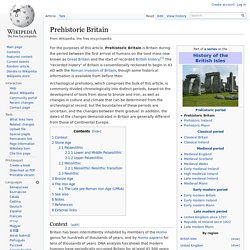

The first Queen of Windsor: 'Royal' 4,400-year-old skeleton is unearthed near historic town. Ancient 'princess or queen' dug up near to the royals' Berkshire residenceShe is adorned with some of Britain's earliest gold jewelleryCopper Age site dates back to with a century or two of Stonehenge By Damien Gayle Published: 09:58 GMT, 22 April 2013 | Updated: 14:37 GMT, 22 April 2013 The discovery of the 4,400-year-old burial site of a woman adorned with gold jewellery has prompted speculation that Windsor's royal connection goes back further than suspected.

Archaeologists working in a quarry near the royal family's Berkshire residence have unearthed a rare Copper Age grave of a middle-aged woman buried with some of Britain's oldest gold ornaments. The find is doubly significant since grave sites from the era containing such fine jewellery, which also included lignite and amber, are usually associated with men. The first Queen of Windsor? 'She was probably an important person in her society, perhaps holding some standing which gave her access to prestigious, rare and exotic items. Timeline of prehistoric Britain. Events from the prehistory of Britain (to 1 BC).

Events[edit] References[edit] See also[edit] Timeline of prehistoric Scotland. Prehistoric Britain. For the purposes of this article, Prehistoric Britain is Britain during the period between the first arrival of humans on the land mass now known as Great Britain and the start of recorded British history.[1] The "recorded history" of Britain is conventionally reckoned to begin in 43 AD with the Roman invasion of Britain, though some historical information is available from before then.

Archeological prehistory, which comprises the bulk of this article, is commonly divided chronologically into distinct periods, based on the development of tools from stone to bronze and iron, as well as changes in culture and climate that can be determined from the archeological record; but the boundaries of these periods are uncertain, and the changes between them gradual.
In addition, the dates of the changes demonstrated in Britain are generally different from those of Continental Europe. Context[edit] Common Brittonic was an ancient Celtic language spoken in Britain. Stone Age[edit] Palaeolithic[edit] Mystery of the Beaker People They Were the First Scots to Celebrate Fashion, Good Food and Free-Flowing Drink. Now, 4,000 Years on, Scientists Are Unlocking the Secrets of the Original Party People... - Health News. By JIM MCBETH THE smiles and convivial air say it all.

They are obviously all close friends or family, dressed in their best clothes and fine jewellery for a quiet get-together. It’s the Bronze Age and the first Scots to introduce the social ritual of having people round for drinks are ready to party. Meet the ancestors the weekend wouldn’t be the same without them. We take for granted the conviviality of Scottish culture, but it was defined 4,000 years ago by a mysterious race that, until now, has kept its secrets.
Our forebears were also warlike, religious, industrious and fashion-conscious. For more than a century, antiquarians and archaeologists have debated the hidden life of this enigmatic people, an apparently aristocratic class who invented a honey-based drink with the bite of a sabre-toothed tiger. Intelligent and capable, they also farmed, crafted in precious metals and clothed the nation with the first woven garments. Mr Duncan adds: ‘Henges are widely spread (across Scotland).